September 27 is World Tourism Day in Russia, the biggest country in the world, where there are numerous opportunities for tourists, from Black Sea coastal resorts to exploring the volcanoes of Kamchatka.
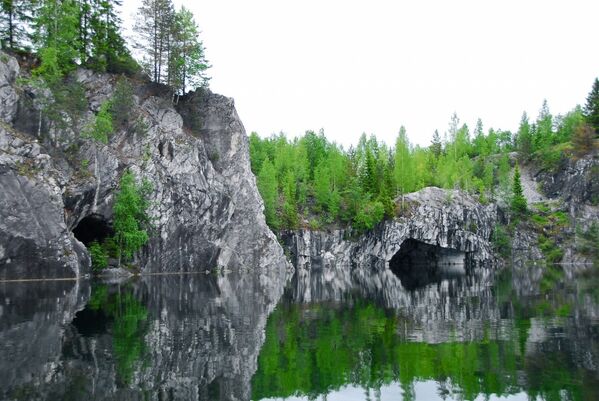
1/15
© Photo : Maria Chebotareva
September 27 is World Tourism Day in Russia, the biggest country in the world, where there are numerous opportunities for tourists, from Black Sea coastal resorts to exploring the volcanoes of Kamchatka.
Above: A former marble quarry in Ruskeala, a mountain park in Karelia, in 2010.
Above: A former marble quarry in Ruskeala, a mountain park in Karelia, in 2010.
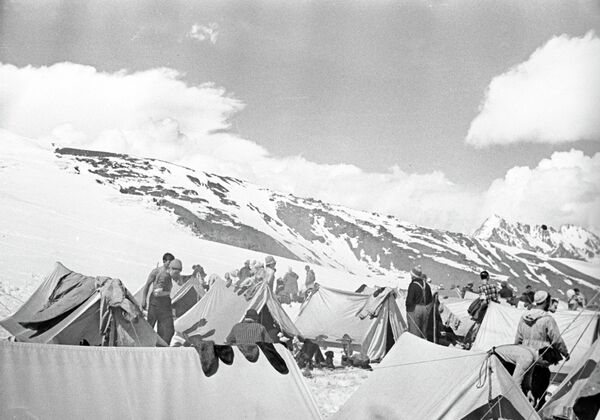
Camping trips were popular among Soviet people. In 1932 over 6.6 million tourists were officially registered.
Above: A Soviet ascent to the peak of Mount Elbrus, dedicated to the 50th anniversary of the 1917 Revolution.
Above: A Soviet ascent to the peak of Mount Elbrus, dedicated to the 50th anniversary of the 1917 Revolution.
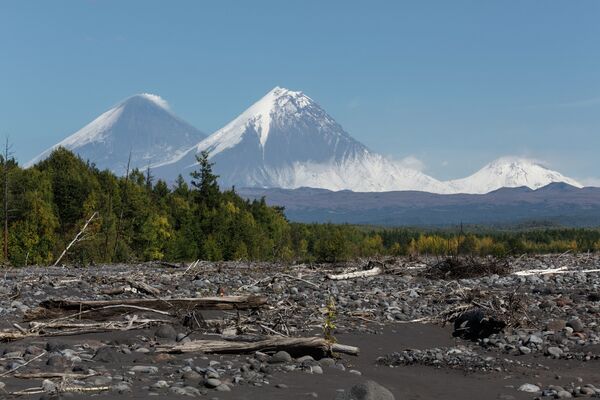
The Valley of Geysers in Russia's Kamchatka is the second largest concentration of geysers in the world and the first in Eurasia. The volcanoes of Kamchatka are a World Heritage site.
Above: A view of the Kluchevskaya, Kamen and Bezymyanny volcanoes from the bed of the Studyonaya River in Kamchatka.
Above: A view of the Kluchevskaya, Kamen and Bezymyanny volcanoes from the bed of the Studyonaya River in Kamchatka.
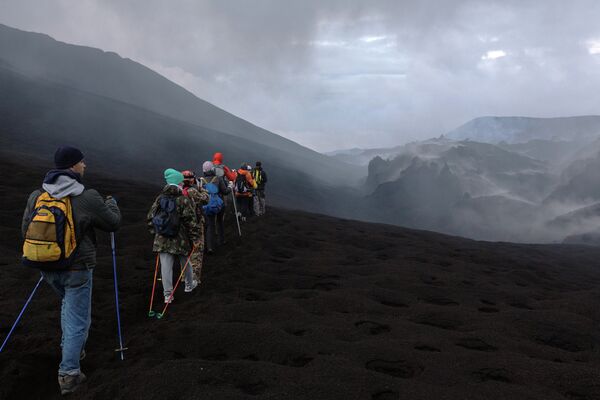
Every year, thousands of tourists visit Kamchatka in Russia's Far East to explore its beautiful volcanoes. 30 volcanoes in Kamchatka are active.
Above: Tourists walk in the eruption zone of Tolbachik volcano in Kamchatka.
Above: Tourists walk in the eruption zone of Tolbachik volcano in Kamchatka.
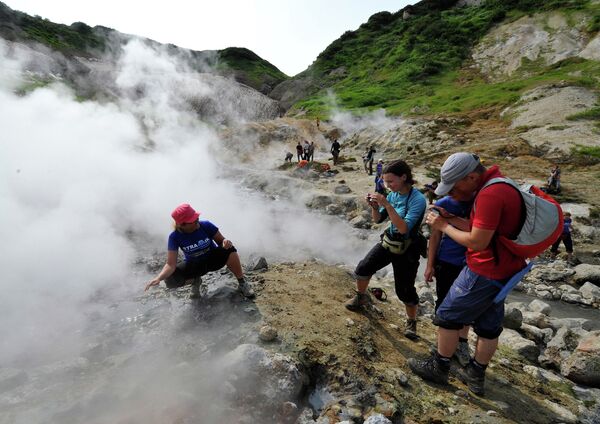
Despite difficulties and remote location, thousands of tourists come to the Valley of Geysers every year.
Above: Visitors take pictures of each other in the Valley of Geysers on one of the slopes of Mutnovsky volcano.
Above: Visitors take pictures of each other in the Valley of Geysers on one of the slopes of Mutnovsky volcano.
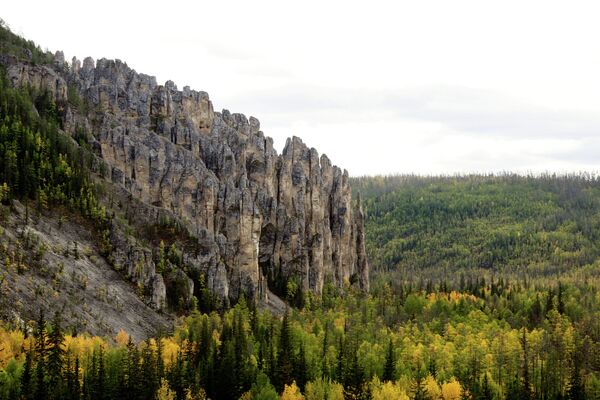
Another interesting site is Lena Pillars, a unique natural monument, protruding off of the right bank of the Lena River, the biggest river in eastern Siberia. The Lena Pillars are naturally shaped rock columns 150-300 meters high, and are a wonder to see. Those who approach closer can see the result of water, wind and erosion work. The pillars bring to mind fabulous creatures, frozen giants, majestic castles and gothic domes. The Lena Pillars was inducted onto the World Heritage List in 2012.
Above: Lena Pillars Nature Park, located along the Lena river.
Above: Lena Pillars Nature Park, located along the Lena river.
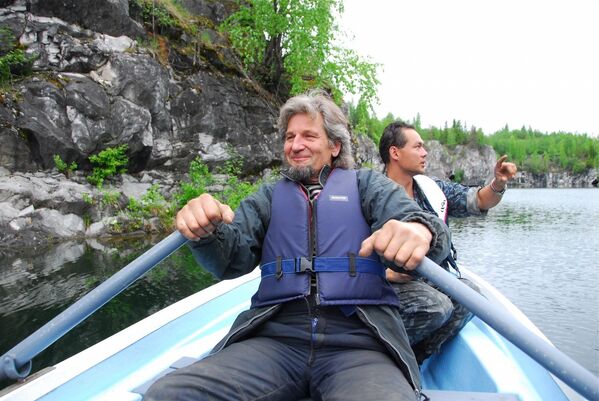
7/15
© Photo : Oleg Zakirov
The refreshing crystal-clear water of the 60,000 lakes scattered all over Karelia offers great opportunities for mind and body recreation. With 11.4% of its territory covered in lakes, Karelia is the world's #1 in terms of lake area per sq km. There is a great variety of fish species and clean water. The largest lakes in the region are Lake Ladoga and Lake Onega. Karelia is also home to the Kizhi Complex built on the Kizhi island during the Russian Empire epoch. Its jewel is the 22-dome Transfiguration Church, followed by the 9-dome Intercession Church and a bell-tower surrounded by a fence. The churches are built of wood without a single nail in tradition with an old Russian technique and seem weightless.
Above: Two tourists paddling through a flooded former marble quarry in Ruskeala, a mountain park in Karelia, in 2010.
Above: Two tourists paddling through a flooded former marble quarry in Ruskeala, a mountain park in Karelia, in 2010.
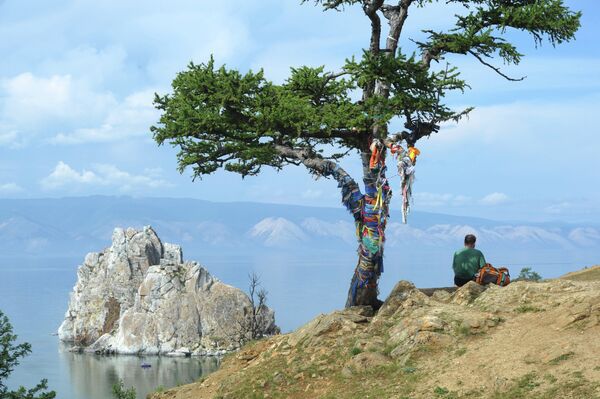
Lake Baikal lies in the very heart of Eurasia. It is the planet's greatest drinking water reservoir. The water is so clean that one can safely drink directly from the lake. The lake has a maximum depth of 1642 meters and is the deepest in the world, exceeding the depth of the Caspian Sea. While 336 rivers and streams run into the lake and only one river Angara runs out. The lake boasts of rich flora and fauna including numerous endemics. The biggest island in lake Baikal is called Olchon. It is a traditional site for Shamanism adherents.
Above: A visitor rests on Olkhon island.
Above: A visitor rests on Olkhon island.
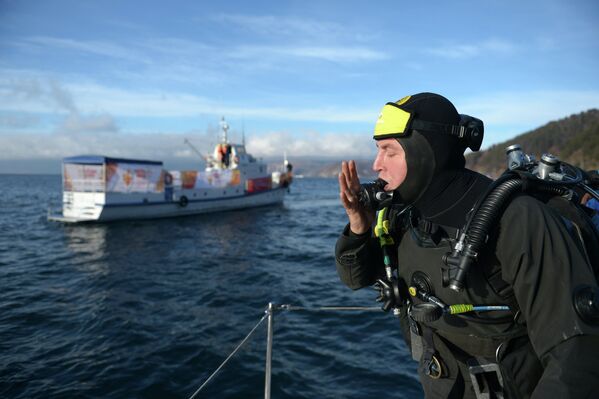
The depth of Baikal attracts divers from all over the world. One special kind of diving in Baikal is ice diving, possible from January to May. Baikal was declared a UNESCO World Heritage Site in 1996.
Above: Emergencies Ministry diver checks the equipment for underwater breathing before diving in Lake Baikal.
Above: Emergencies Ministry diver checks the equipment for underwater breathing before diving in Lake Baikal.
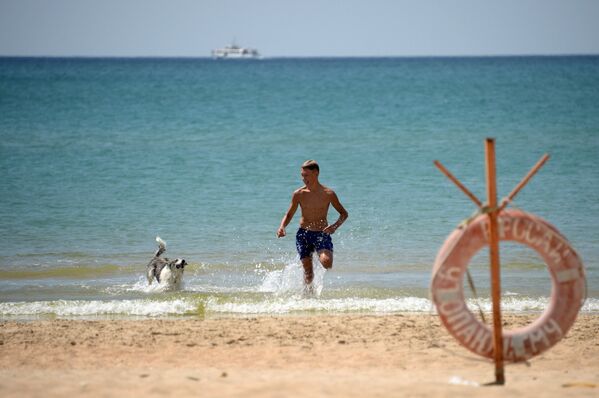
The Black Sea is Russia's most popular health resort. A warm sea, Mediterranean nature, picturesque heritage of Ancient Greek colonies, hospitable people and affordable prices - what else can better help one "recharge one's batteries"?
Above: A man with a dog on the shore of the Black Sea in Anapa.
Above: A man with a dog on the shore of the Black Sea in Anapa.
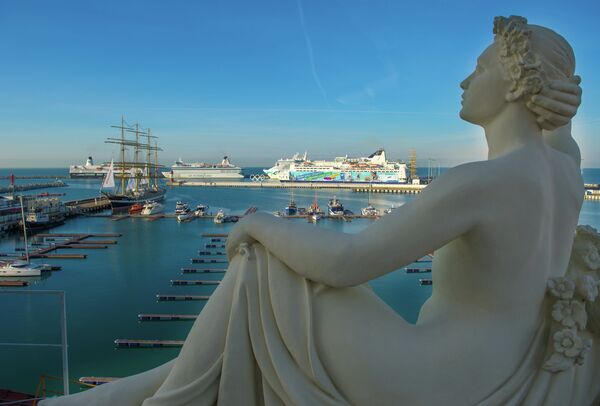
The Black Sea has been inspiration for singers, poets, novelists, directors and painters, including the world famous marine artist Ivan Aivazovsky. The Black Sea coast views also attract photographers whereas its water is gaining ground with sportsmen and sailing fans.
Above: A view at the ships in the harbor from the historical Sochi Seaport building, before the opening ceremony of the XXII Olympic Winter Games.
Above: A view at the ships in the harbor from the historical Sochi Seaport building, before the opening ceremony of the XXII Olympic Winter Games.
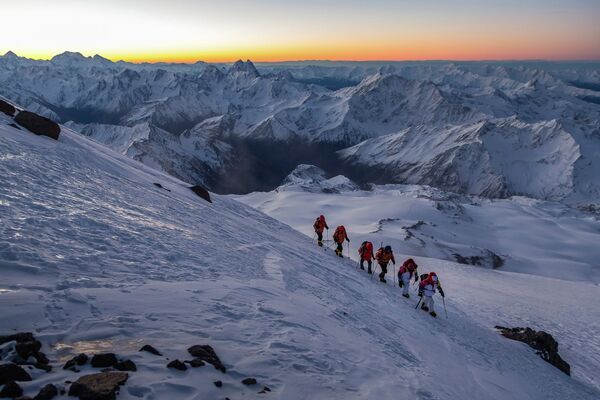
Mountaineering is another popular Russian activity for the strong and the brave. There are so many challenging destinations in Russia to attempt and climbers train year round for these harrowing expeditions. The Altai Mountains tend to draw the most climbers. Some call Altai Mountains "Russian Tibet" and "Siberian Alpes". The Caucasus are also admired by active recreation fans. The daunting mountain range has an aura of mystique, especially the 5642-meter Elbrus, the highest point of Russia.
Above: Torchbearers climb Mt. Elbrus in order to light the Olympic Flame. Photo by Konstantin Dikovsky
Above: Torchbearers climb Mt. Elbrus in order to light the Olympic Flame. Photo by Konstantin Dikovsky
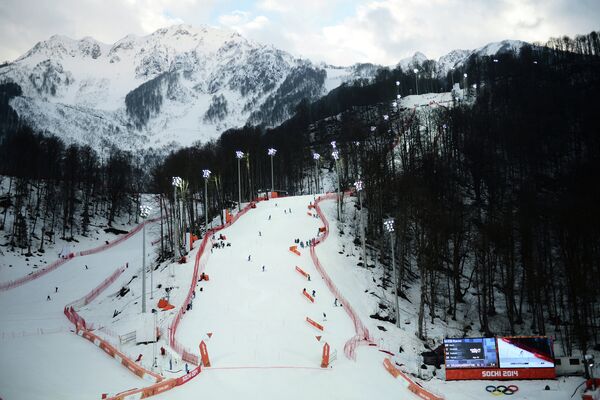
Sochi, the coastal city which hosted the recent Winter Olympics, is a popular destination and is called "tourist capital of Russia". It combines the best of both worlds, in the summer people flock to the beaches and in the winter they take the world class slopes.
Above: View of the women's alpine skiing contests at the XXII Olympic Winter Games in Sochi.
Above: View of the women's alpine skiing contests at the XXII Olympic Winter Games in Sochi.
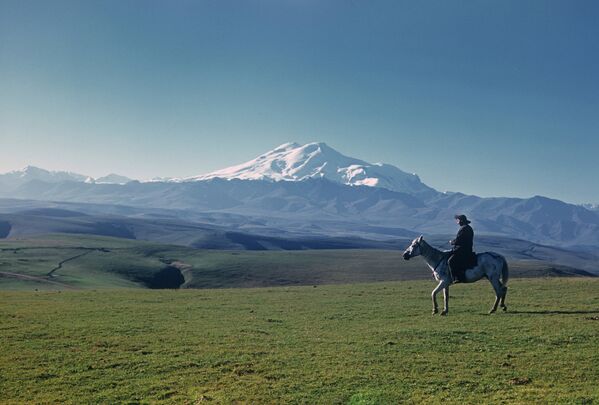
Mount Elbrus is the highest mountain in Russia; it is 5,642 meters high. The mountain itself is a dormant volcano. Some cartographers mark the mountain as part of Europe; if this was the case, it would be bigger than France's Mont Blanc.
Above: A view of Mount Elbrus with a horse and rider in the foreground.
Above: A view of Mount Elbrus with a horse and rider in the foreground.
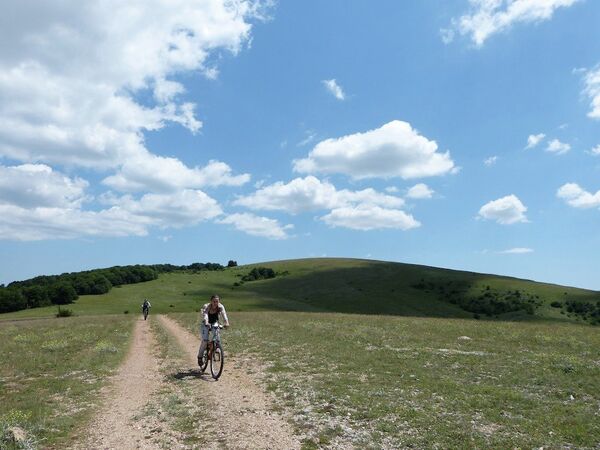
15/15
© Photo : Dmitry Chebotarev
The Crimea, a peninsula bathed by the warm Northern waters of the Black Sea, is a tourist dream. The mild climate and the hot sun are paired with by music festivals, hiking routes and a great variety of cultural sites. One of the best is a magnificent decorative castle "the Swallow's Nest". A curious traveler should certainly visit Sevastopol, the pride of Russian seamen.
Above: Two tourists riding their bikes in the mountains of Crimea, 2013.
Above: Two tourists riding their bikes in the mountains of Crimea, 2013.

